The other day I got a great question from a college intern:
I was helping out with the women’s hockey team several days ago, and they were having them do weighted pushups. I noticed that most were barely going halfway down on the eccentric portion, and their elbows were flared almost to ninety degrees. I suggested to their head coach that he drop the weight, as they clearly weren’t able to handle the weight, weren’t getting anything out of it, and were just putting themselves at risk for getting hurt. He obliged and had them regress to bodyweight, but still a couple of them had trouble with proper form. I was curious if you could recommend any regressions from BW pushups for younger athletes, inexperienced lifters, or female athletes who just can’t quite handle them.
I really like questions like this because it speaks more to the art of coaching. Also, the question is phrased in a way that demonstrates an understanding that “good” exercises can be performed in ways that make them “bad” exercises. Teaching quality movement is more than just picking good exercises; they need to be performed optimally to really gain the benefit.
Push-ups, because they require no equipment, and therefore are space and large group friendly, tend to be a go-to for youth hockey organizations. I’ve discussed the common flaws in horizontal pushing patterns before, especially as they pertain to shoulder pain. You can check out one article on that topic here: Shoulder Pain with Pressing Exercises
The truth is, most untrained female athletes and almost all youth athletes (especially ~15 and younger) can’t do a good push-up, let alone several sets of them. As a result, we’re constantly regressing the movement in any number of ways dependent upon what the major limitation may be.
The three most notable limitations we see on a regular basis are:
The images below demonstrate what each of these may look like.
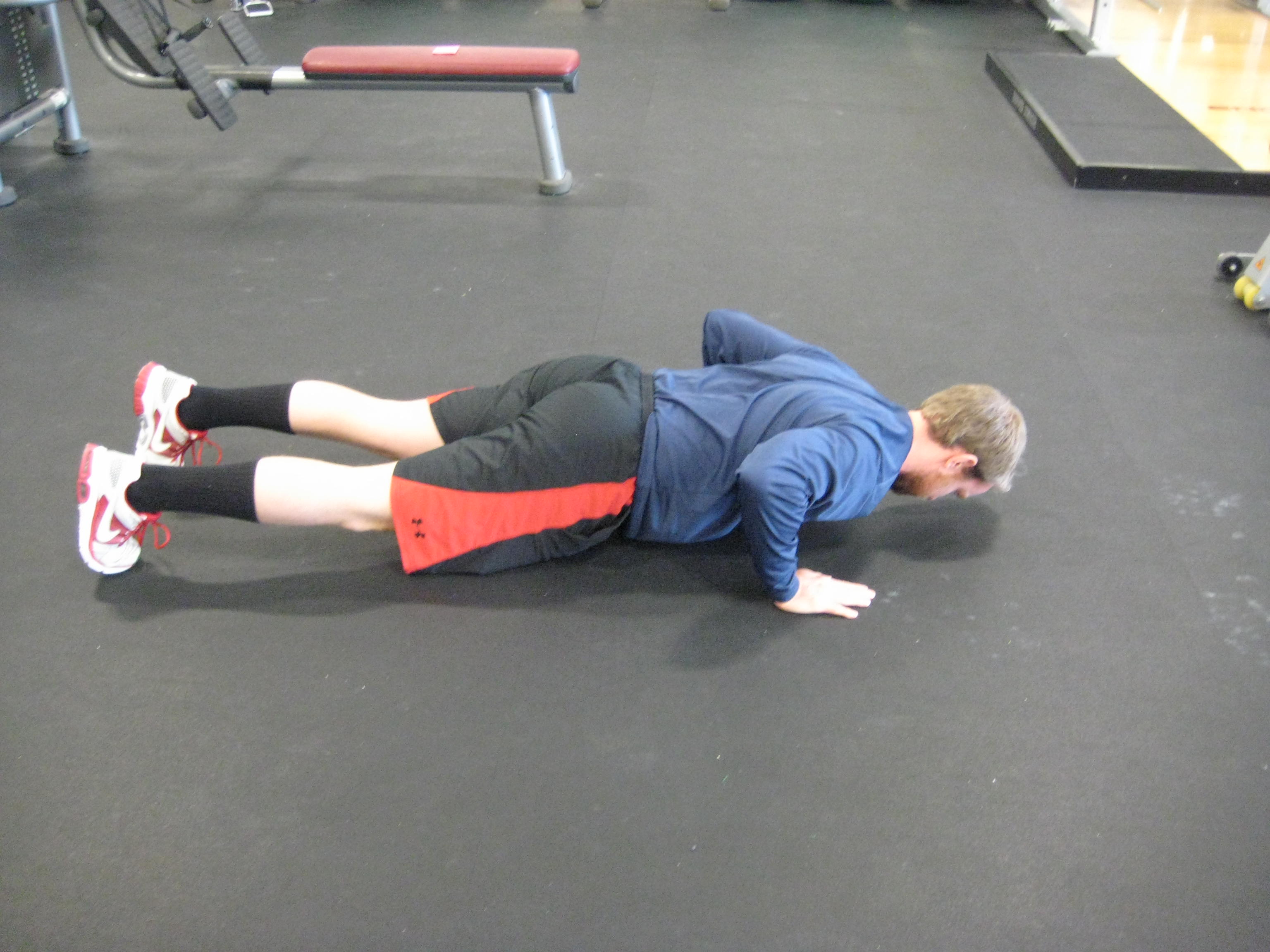
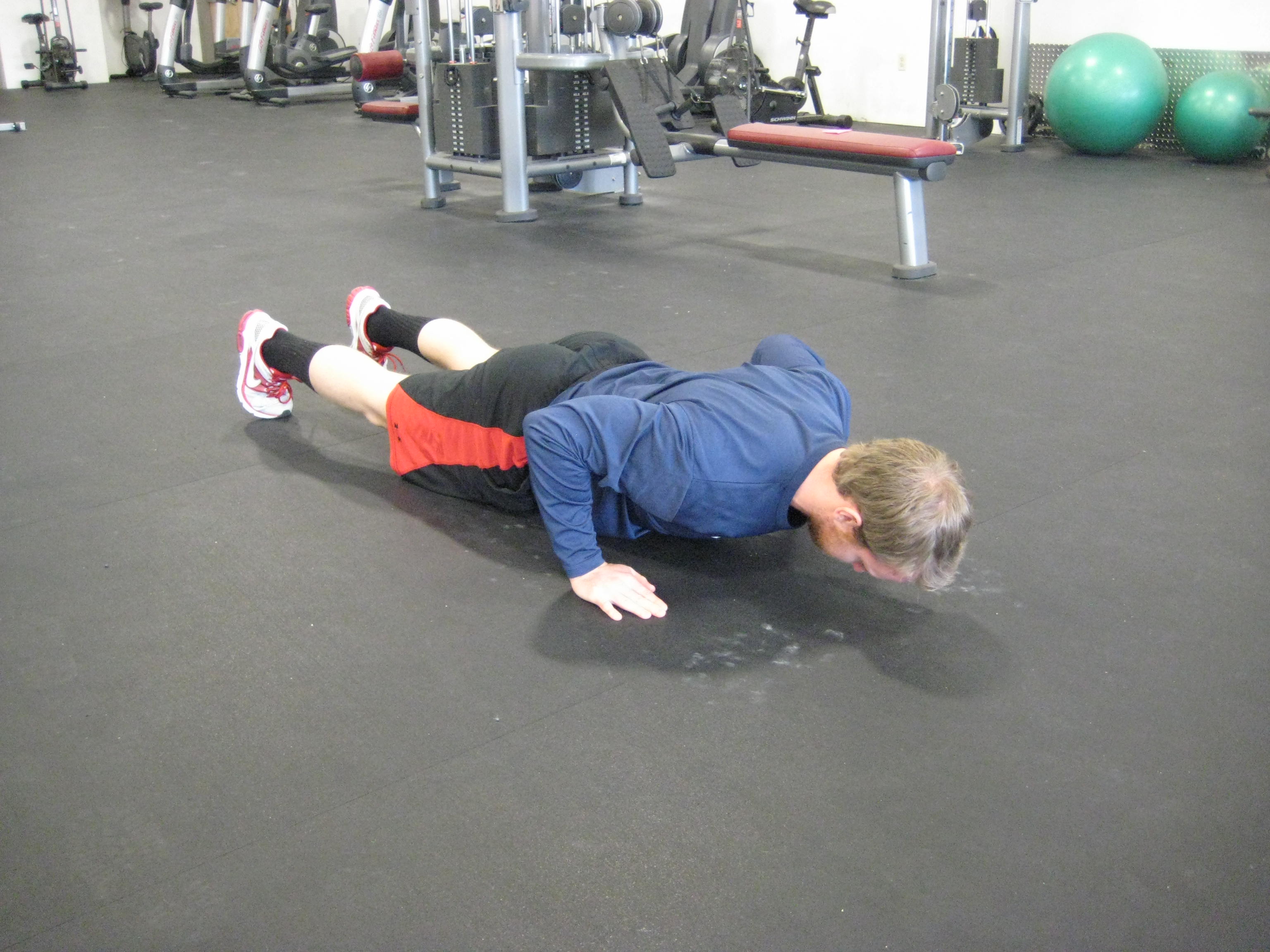
Proper push-up position.
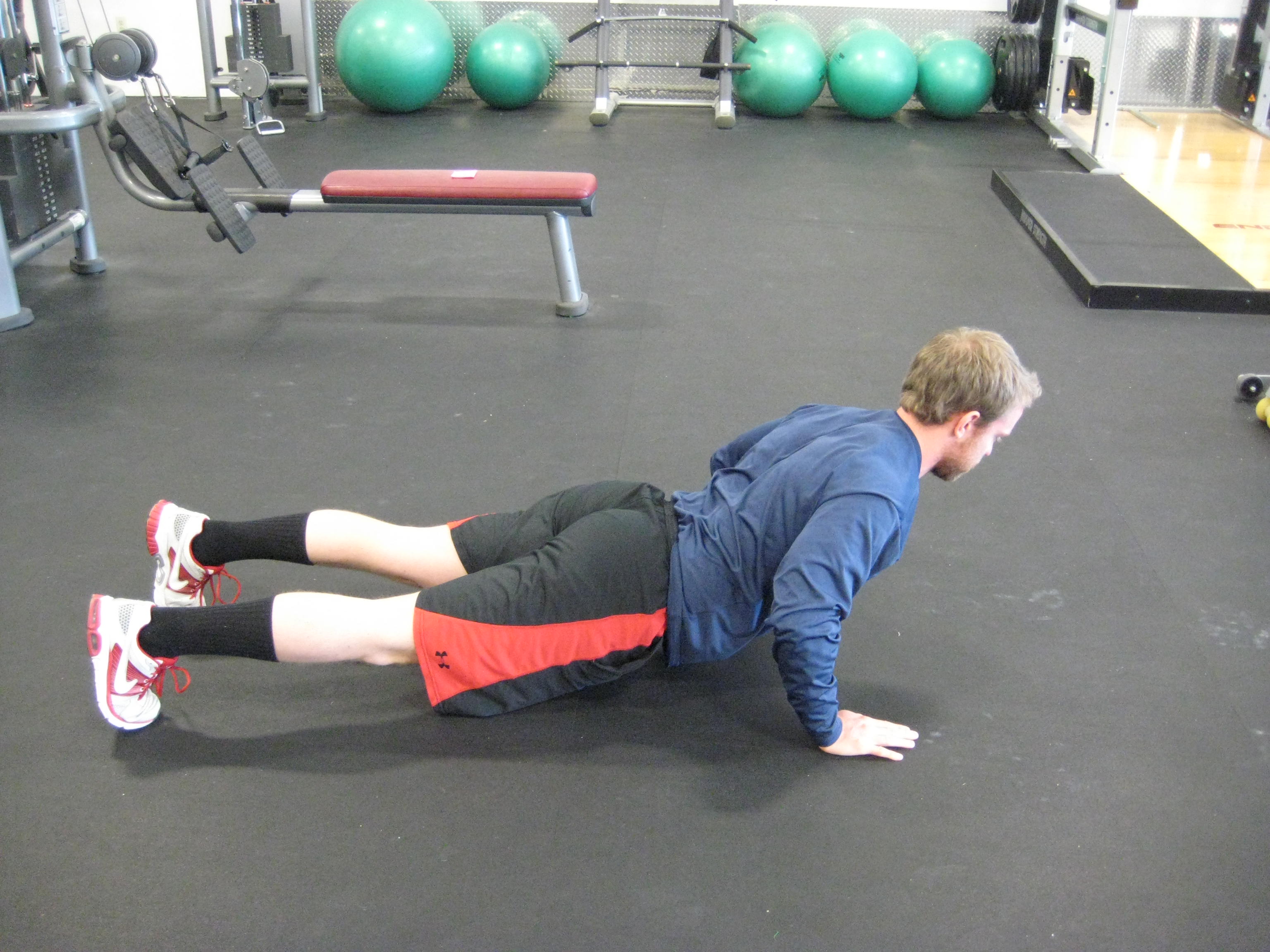
Push-up with excessive extension, common for athletes with poor core strength.
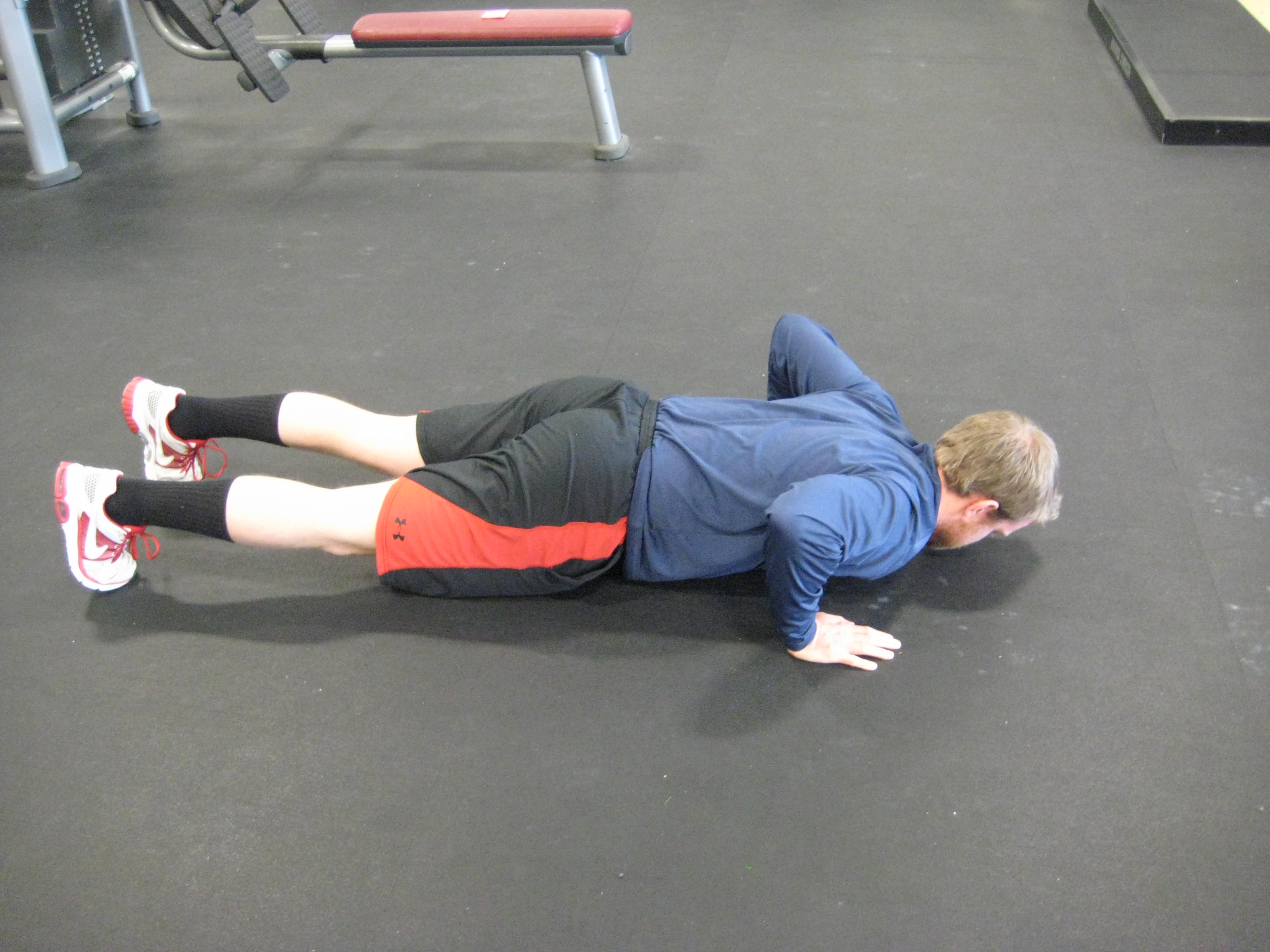
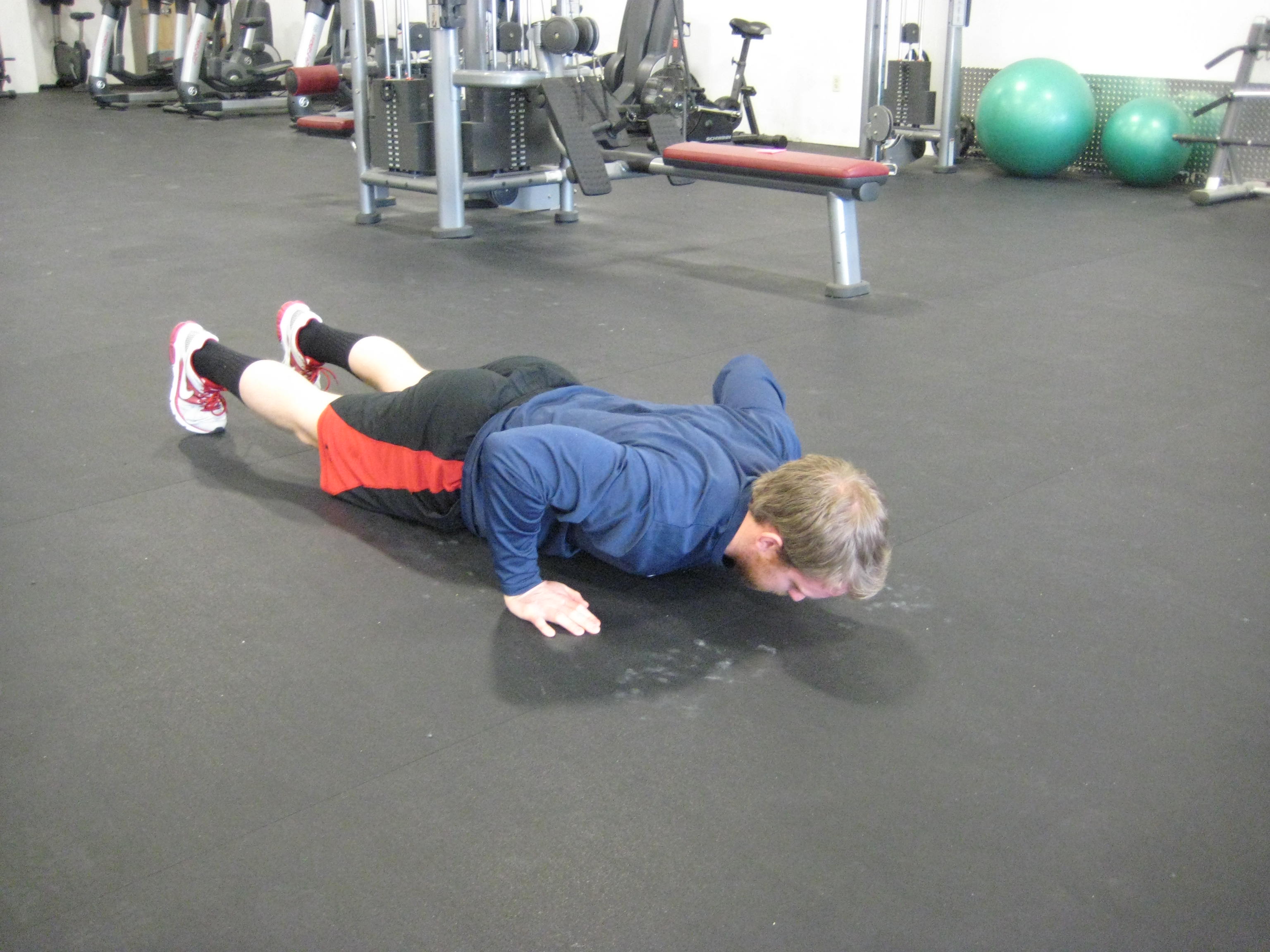
Push-up with shrug at bottom, a common flaw in athletes with poor scapulothoracic control. Has anyone seen my neck?
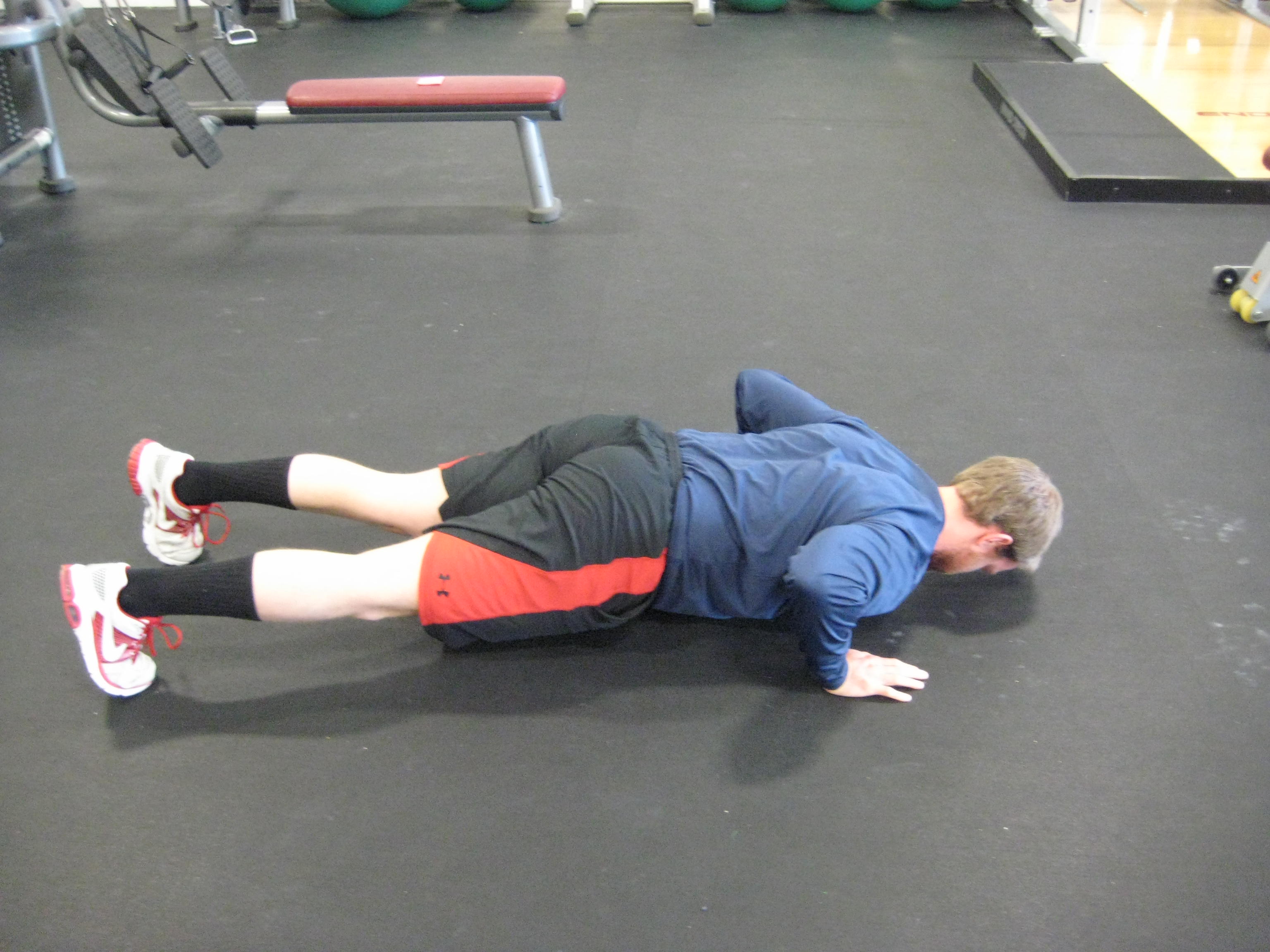
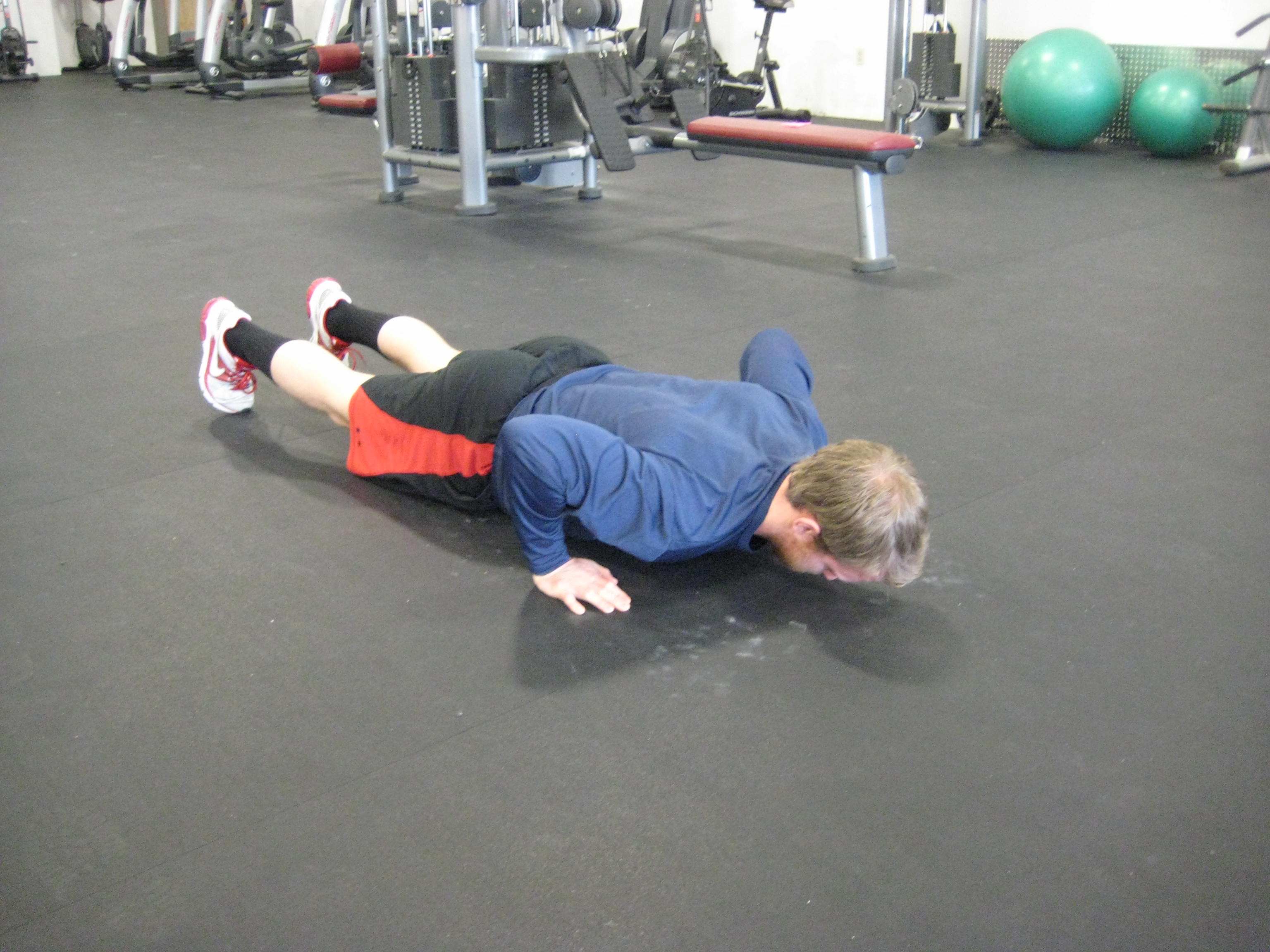
My best attempt at mimicking a push-up with an anterior scapular tilt at the bottom, a common flaw in athletes with poor scapulothoracic control. Note how the shoulder blades appear to angle forward and down toward the ground, and how close the front of my shoulders are to the ground compared to the first set of pictures.
To address these, there are a few different options.
1) Regress the push-up to a front plank. This will help provide an opportunity for the athlete to learn the body awareness of a “tall” position with a neutral spine, as well as help develop the stabilization/strength necessary to maintain this alignment with more dynamic activities.
Any one or all of these things could in fact be going on and require some extra attention. That said, in most cases the athlete simply hasn’t internalized what the movement should look and feel like. If regressing the difficulty of the exercise (e.g. putting them on an incline), providing a few simple coaching cues and a little practice time clean up the pattern, then all of the movement dysfunction diagnoses was for nothing. In other words, it’s important to give the athlete a true opportunity to learn the movement before breaking down what may be going wrong with it. A lot of times a lack of body awareness is the underlying problem, and some simple coaching cues are the solution.
Lastly, sometimes athlete will do one good push-up and then fall back into an ugly pattern, which was fairly comprehensively described in the original question (elbows flared out, heads dropping down, lower backs sagging, etc.). In this case, a great strategy is to progress them to a “bottoms-up” push-up. These can still be done on an incline, if necessary, but it allows the athlete to start at the bottom with optimal alignment and engagement, push up, and simply descend back down into the same position. This tends to clean up a lot of bad patterns for folks that have sufficient strength to perform the movement correctly, but may have gotten a little sloppy with their technique. It basically concentrates a lot of quality practice time into a condensed set.
To your success,
Kevin Neeld
UltimateHockeyTraining.com
Please enter your first name and email below to sign up for my FREE Athletic Development and Hockey Training Newsletter!